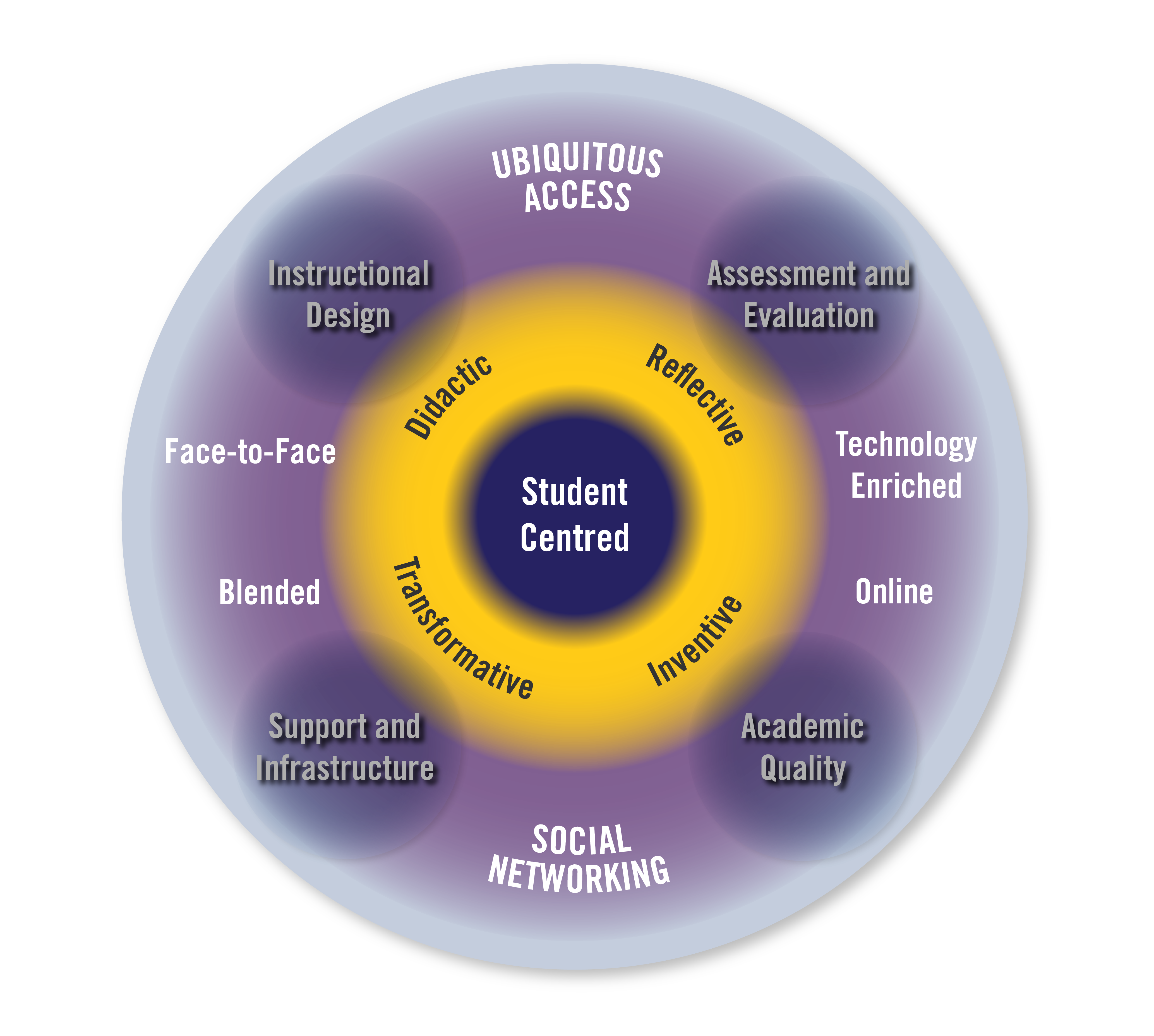Creating Significant Learning Environments (CSLE) – An integrated approach to creating flexible, engaging and effective learning environments.
We design information systems, smart buildings, ecological friendly communities, learning spaces and so many aspects of our society but we, unfortunately, do not apply this holistic approach to designing learning environments. Apple has always designed excellent hardware but with their iPhone, iPad and the whole IOS ecosystem they have gone a step further and have designed a mobile communication or networking environment that just works. If we apply a similar purposeful design to our learning environments we also can create a significant learning environment that just works.
Whether we are purposeful in its design or we just allow the circumstances to dictate its development, educators at all levels are providing some form of learning environment. Rather than allow the environment to come together on its own and respond reactively to the learning dynamics that arise I suggest that educators become proactive and create significant learning environments. If we start with a student-centered approach and purposefully assemble all the key components of effective learning into a significant learning environment we can help our students to learn how to learn and grow into the people we all hope they will become.
The following mandala highlights the components that we need to consider when we are creating significant learning environments:
Origin and Development
The development of the Creating Significant Learning Environments (CSLE) summer institute in the summer of 2010 was a response to Abilene Christian University’s (ACU) 21st Century Vision of educating global leaders who think critically, globally and missionally. To satisfy this vision ACU faculty and staff were required to create courses based on modern instructional design principles that incorporate significant, active and collaborative learning.
Elements of Dee Finks Creating Significant Learning Experiences were combined with the foundations of Inquisitivism and years of practical experience in developing significant learning environments to result in an approach that enabled faculty to design and build a significant learning environment that facilitated engaging, active and authentic student-centered learning.
Several 5 day workshop were run from May to December of 2010 resulting in the development or redevelopment of over 30 courses.
CSLE uses Finks taxonomy and backward design principles but moves well beyond Finks focus on the classroom experience to incorporates the following factors that make up the whole learning environment:
- Student centred
- Teaching roles – Presenter, Facilitator, Coach, Mentor
- Ubiquitous Access & Social Networking
- Instructional delivery formats – face2face, technology enhanced, blended, online
- Instructional Design
- Assessment & Evaluation
- Academic Quality & Standards
- Support & Infrastructure
CSLE evolves and the CSLE workshop are re-developed after an observation of an informal learning environment in 2012
An observation of my boys experience on a 2012 trip to Whistler and a visit to the Whistler Air Dome, commonly referred to as the foampit, reaffirmed the importance and power of formal and informal learning environments and caused me to take a more significant stand on the role that the environment and circumstances play in learning. I have been arguing since the mid 90’s that learning is dependent upon the creation of an effective learning environment and the immersion of the learner in that environment. A learning environment can be a classroom, an online course or anywhere for that matter where learning can take place. I have also argued that learning is the responsibility of the learner and that teachers are not able to make a student learn–the best that teachers can do is develop or establish the environment, immerse the student in that environment and then motivate and inspire the learner to take ownership of their learning. When learning takes place a teacher is really just the facilitator who helps the learner navigate the learning environment and process.
You can read about the informal learning environment that motivated me to formalize the CSLE approach and revise my workshops in the Significant Learning Environments post.
In 2013 and 2014 several CSLE two or four-day workshops have been conducted for the general faculty, School of Health Science and the School of Business faculty at British Columbia Institute of Technology (BCIT). Because the CSLE approach is holistic it can incorporates a variety of Instructional Design approaches and can, therefore, be modified to suit a curriculum development process, general instruction and most recently a focus on blended and online learning.
Future of CSLE
Work on formalizing CSLE into an “official” approach has begun. I have presented the approach at several conferences, workshops and in seminars and will be working on a CSLE white paper and peer review publication. I will also be using the approach in EDLD 5313 Creating Significant Learning Environments which is a Masters level course I will be teaching as part of Lamar University’s MEd. in Digital Learning and Leadership.
Finally, I will continue to write about CSLE in my blog. You can view several previous posts that address components or aspects of the CSLE approach:
- Significant Learning Environments
- Innovation in Education – A Return to Teaching & Learning
- Not Suited for School BUT Suited for Learning: Further Considerations
- Arts Integration for Deeper Learning: Its the Context and Environment that Matter
- Media/Visual Arts Programs vs Embedding Media into All Programs
Links to the all the components of the CSLE+COVA framework:
Change in Focus
Why CSLE+COVA
CSLE
COVA
CSLE+COVA vs Traditional
Digital Learning & Leading
Research
Revised July 14, 2018






























